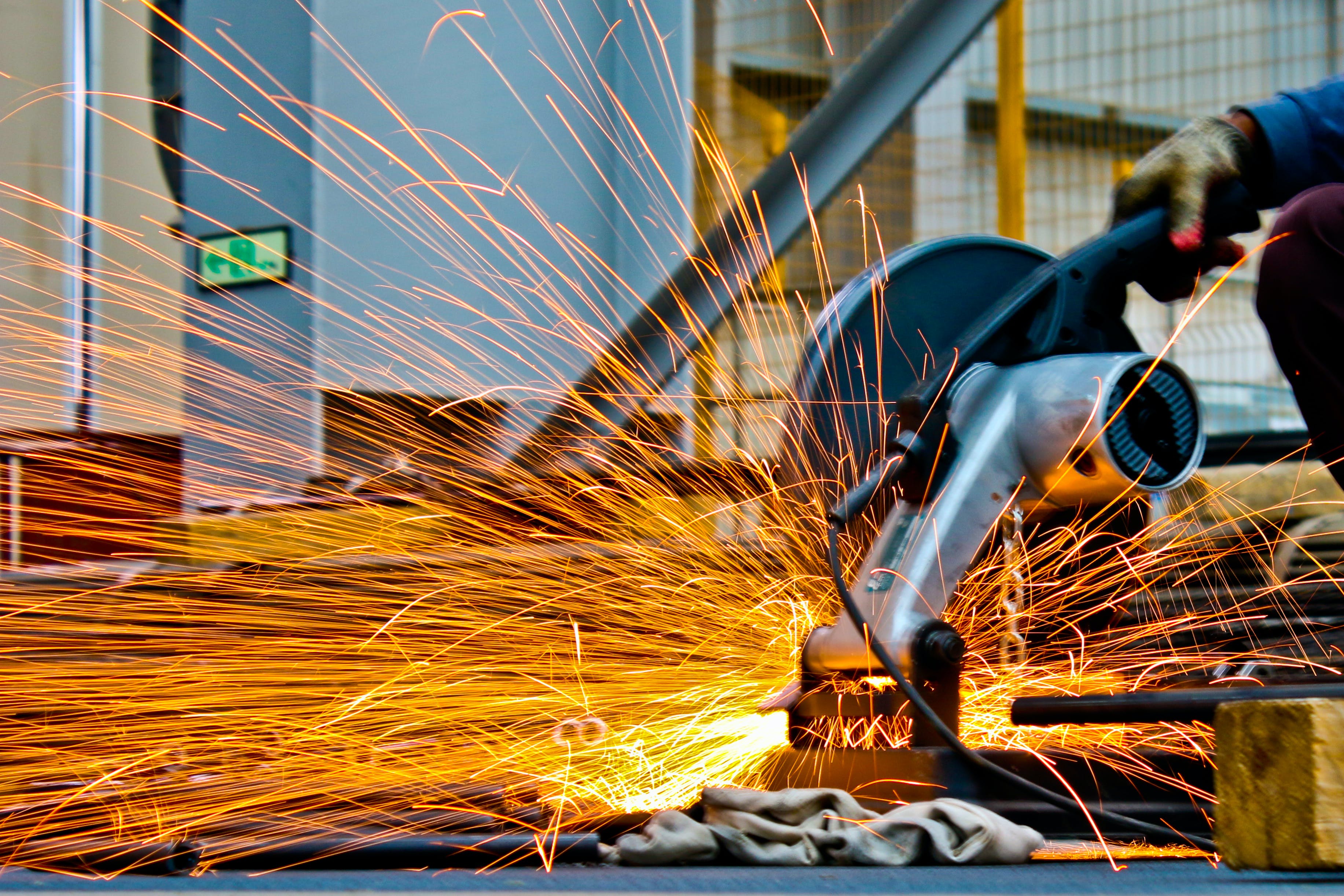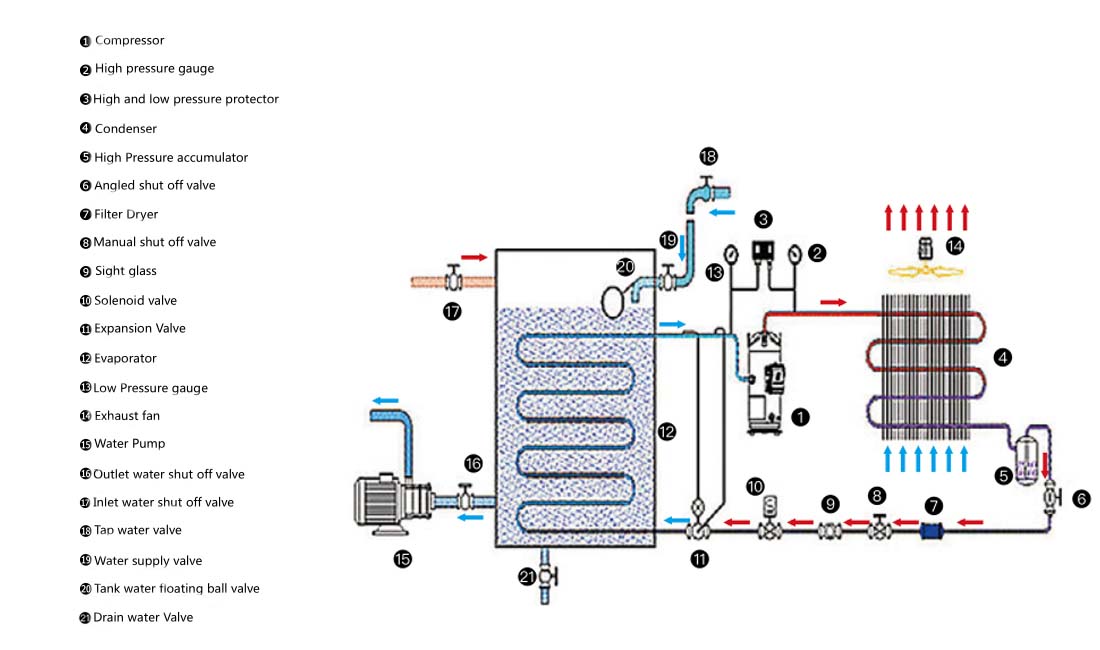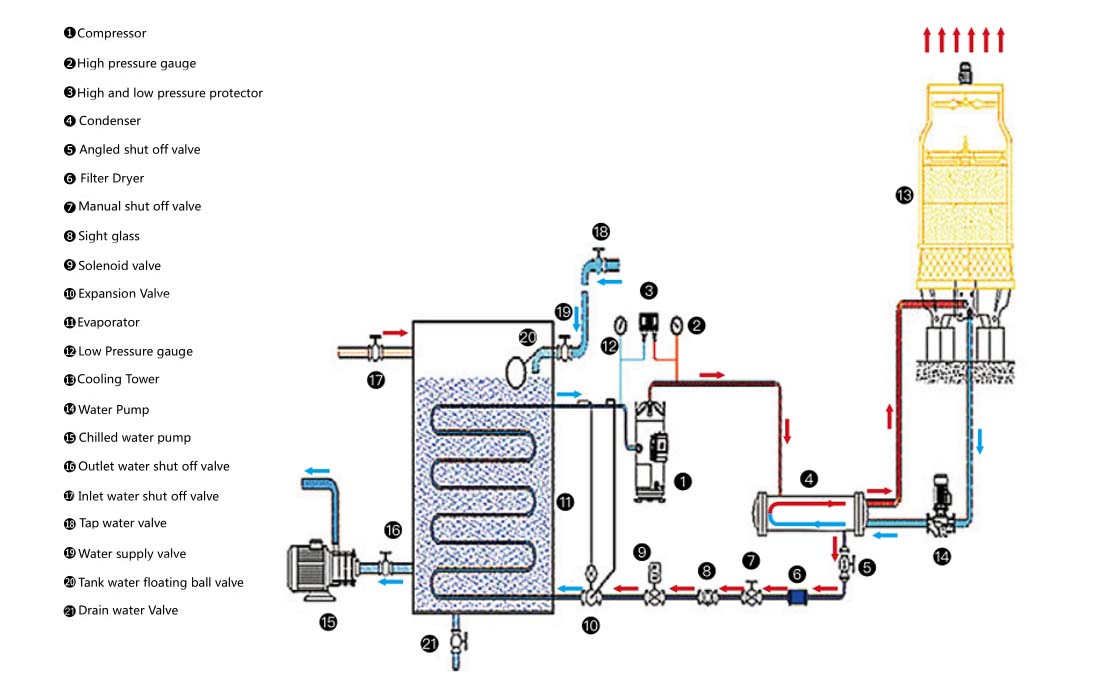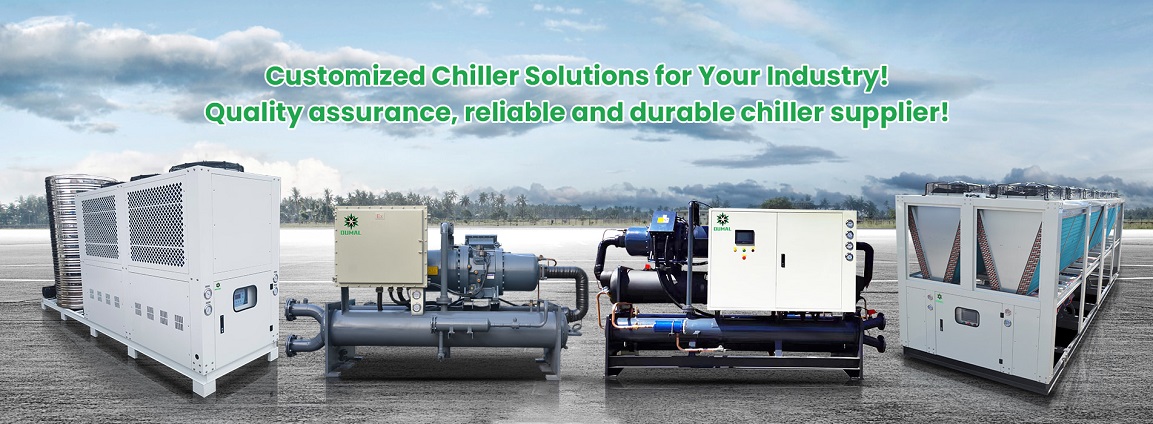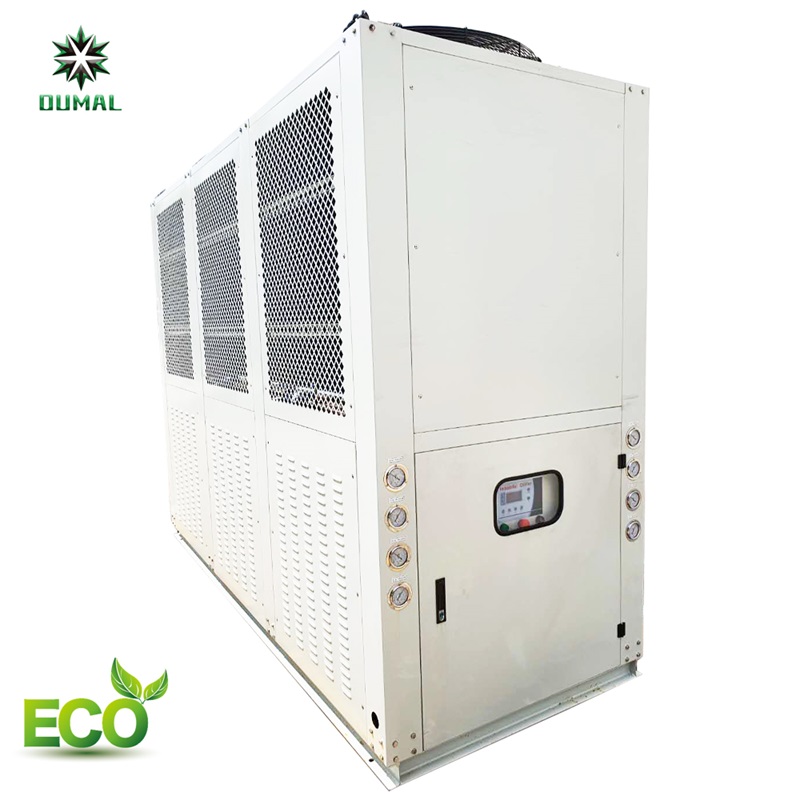Common failures in chiller maintenance
During the maintenance of the chiller, in some environments with many dust layers, after the chiller has been used for a period of time, we will find that the chiller is noisy, and there are many dust layers on the accessories. This is a common phenomenon in the use of the chiller. At this time, the chiller is We need to serve it.
First of all, the chiller is a device that provides cold to the outside world, in other words it takes away the heat, so the ventilation environment required by the chiller is very important. The water cycle of the chiller is a simple process, but we must pay attention to the details of the simple process. If the front hood of the chiller is filled with dust, it will affect the heat dissipation of our chiller. Once the heat dissipation is affected The impact will directly cause the cooling effect of the chiller to drop sharply. If we do not remove the ash layer from time to time, on the one hand, it will affect the cooling effect, on the other hand, it will cause the internal components to burn out. After many chillers have been used for a period of time, the poor cooling effect is basically caused by this aspect.
Secondly, the temperature of about 20 degrees Celsius is just suitable for the strong growth of our microorganisms. When we use the chiller, sometimes its temperature is controlled at about 20 degrees Celsius. A large number of microorganisms accompany our water cycle, and some microorganisms are attached to our filter. Above the board, the waterway is not smooth, causing the chiller to produce a lot of noise. Even some microorganisms are attached to the heat exchanger of the chiller, causing the chiller's cooling effect to be poor.
Combining the above two points, I must maintain the chiller regularly and clean up the dust and debris in the chiller in time, so that the functions of our chiller can be guaranteed in all aspects, and it can maintain normal operation. The following are common faults in the maintenance of chillers.
1. Power failure. If a power failure occurs during the use of the chiller, it may cause the fuse to blow, the phase sequence protector to burn, phase loss, or instability. The solution is simple, that is, to replace the corresponding protector, Or fuse to ensure no phase loss and power supply stability.
2. Water pump failure. If there is a water pump failure, it may be caused by the overload protection action on the AC contactor of the water pump, the capacitor burned out, or the water pump itself; it is necessary to deal with the overload problem, replace the capacitor, or the water pump identity problem.
3. Water pump failure. If the compressor fails, it may be because the compressor capacitor is burned out and the compressor coil winding is abnormal. At this time, replace the capacitor or unwind the winding to restore it to normal.
4. Pressure switch failure, if it is a high and low pressure switch failure, it may be that the filter is blocked, the system is insufficient in winter, the circulating cooling water is stopped, the heat exchange cooling fan stops working, etc., it is necessary to replace the appropriate filter and add refrigerant to the cooling system ; At the same time, check whether the sweat cooling water circulating pump is normal; check whether the fan is working normally, if it is abnormal, repair it as soon as possible.
1. Reverse alarm:
1. The three-phase wiring of the power supply is wrong (pay attention to the auxiliary control line), check the wiring problem, turn on the power switch and the water pump switch to burn the fuse, and the circuit is short-circuited. Check the control wire and the main power line. The water pump rotor is stuck. Loosen the motor rotor;
2. If the fuse is not installed, install an appropriate fuse.
3. The power indicator is damaged, replace the electronic board.
2. Compressor failure
1. Compressor coil is short and open circuit, replace the matched compressor
2. Compressor overload protector automatically trips, adjust the current limit of the protector appropriately within the allowable range and press the reset button
Three, water pump failure
1. The water pump motor coil is short, open circuit, repair the motor coil or replace the motor
3. The overload protector of the water pump automatically trips, and the current limit of the protector is appropriately increased within the allowable range. Press the reset button halfway.
Fourth, the compressor is frosting
1. If the circulating water is flowing or the valve is not opened, check the water valve and all pipelines to ensure unobstructed flow, and install short-circuit pipelines.
2. The circulating water pipe configuration is too small, increase the diameter of the circulating water pipe to ensure the normal water circulation.
Troubleshooting of chiller maintenance
1. The temperature sensing wire and temperature measuring body are dirty, wipe the temperature measuring body clean
2. The temperature control meter is damaged, repair or replace the temperature control meter
3. Poor contact of the temperature sensing wire, repair or replace the temperature sensing wire
4. There is no circulating water in the water tank, and a circulating water path is short-circuited between the chilled water outlet and the inlet
5. The temperature control meter is out of control. Replace the temperature control meter. High pressure failure. Poor heat dissipation, dirty radiator, bad air to clean the radiator, improve ventilation conditions, and the cooling fan does not work. Check whether the fan motor is burned out or short circuit. Repair or replace the motor. Damaged, replace the high pressure
